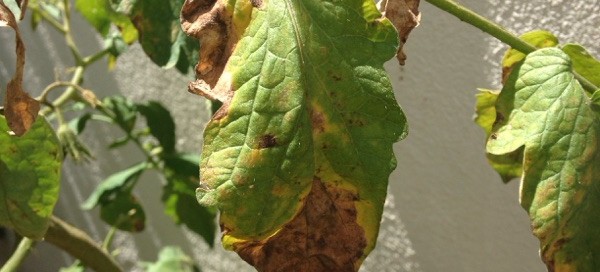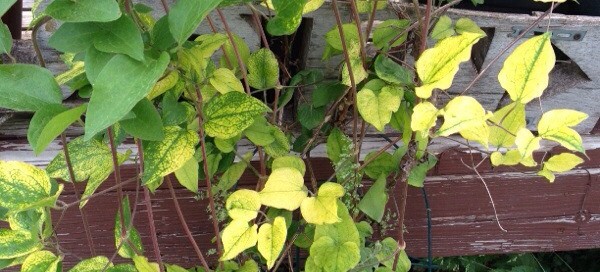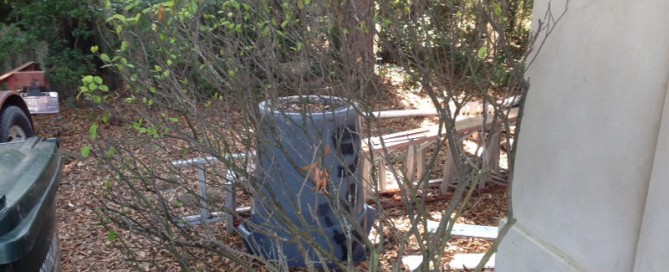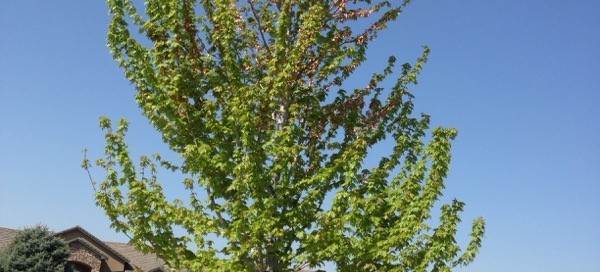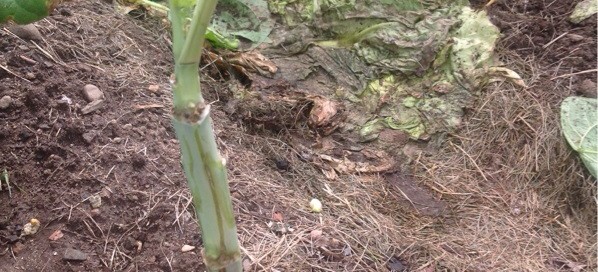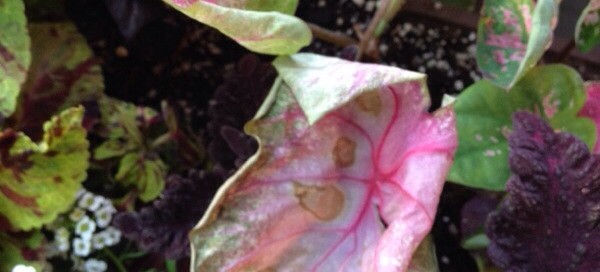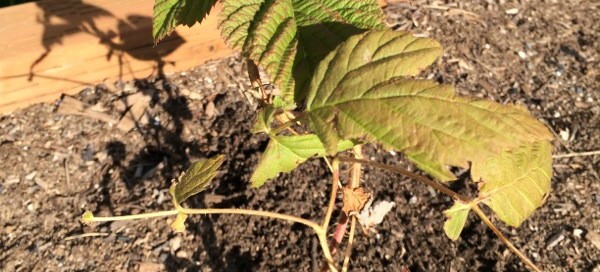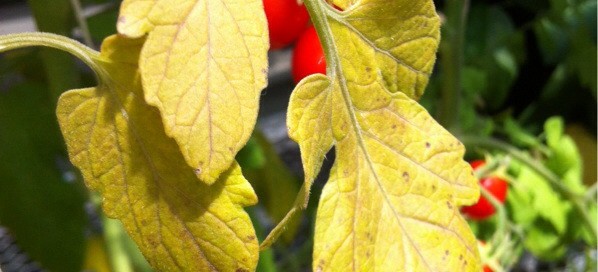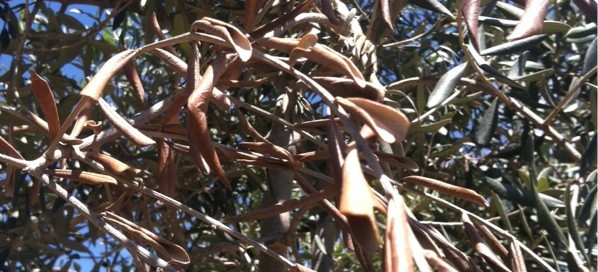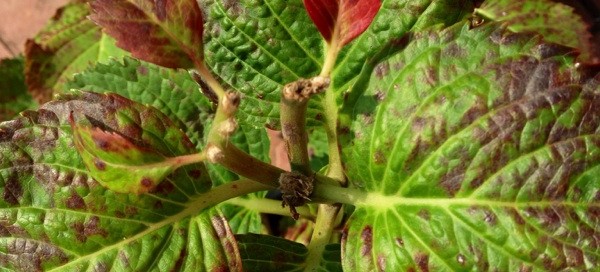Fusarium Wilt
Without seeing the whole plant, it is hard to get positive identification without lab testing, however this appears to be Fusarium wilt. The first symptom is a slight yellowing of a single leaf or a slight wilting and drooping of the lower leaves. A distinct brown discoloration of the water and food channels can be seen in a cross section of a stem close to the base of the plant.
There are many good online resources that will provide details. Most often, fusarium is present in the soil. Do NOT dump the soil in your pot into your garden. Rather, dispose of it in the trash. Once infected, soil retains this fungus indefinitely.
Without being able to see an entire plant to confirm Fusarium Wilt, here's some more detailed information on Fusarium wilt from the Colorado Extension Agency - http://www.ext.colostate.edu/pubs/Garden/02949.html
Here is a link that might also be helpful:
http://www.ipm.ucdavis.edu/PMG/GARDEN/VEGES/DISEASES/fusarwilt.html
http://www.ipm.ucdavis.edu/PMG/GARDEN/VEGES/tomato.html
